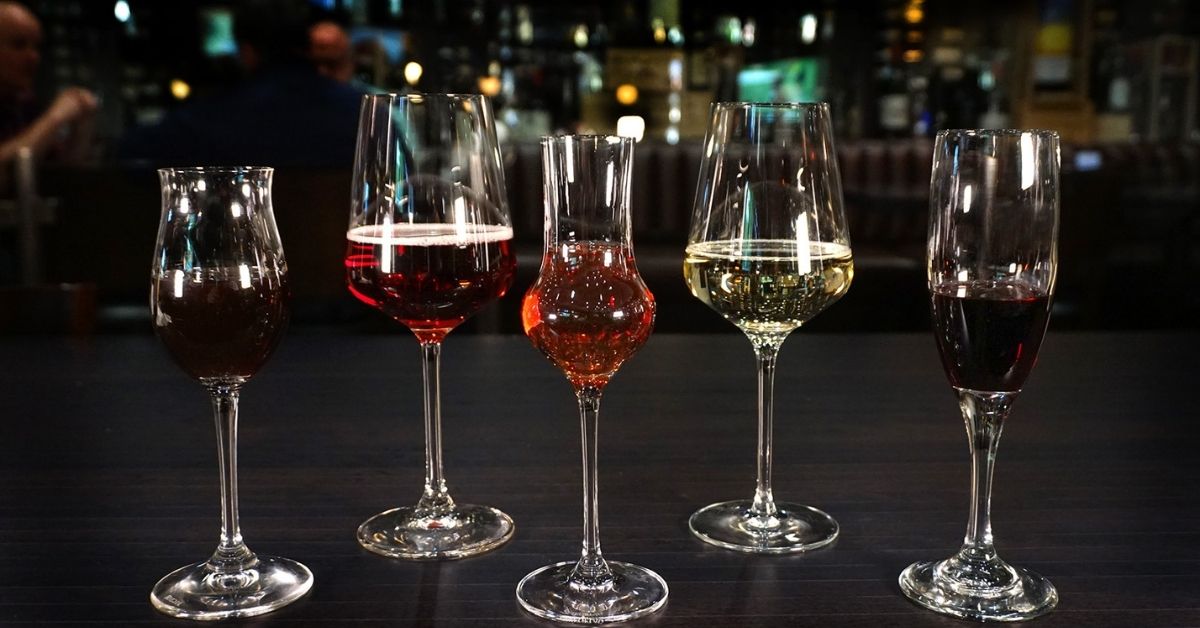Experience the flavors of Italy around Las Vegas without a passport
When the Dolce course arrives at the Italian table, who can resist tiramisu, cannoli, panna cotta, gelati, shall I name more? Yet Hemmingway once said, “Any man who eats dessert is not drinking enough.” So, we’ll take this opportunity to pass on dessert (just this time) and drink instead dessert wine. Nothing reminiscent of Grandma’s candied wine cooler here. We are talking about bright, charming and sweet wines that range from light and flirty to downright seductive. And what country produces more sweet wines than you ever thought? Italy.
From the northern “leg-warmer” region of Italy’s boot to its toe, there lies an abundance of delicious sweet wines or vini dolci. Starting with a refreshing and light style is Moscato d’Asti (available at Garagiste Wine Room & Merchant, Carbone, Osteria Fiorella, Esther’s Kitchen, Valley Cheese & Wine) from the Piedmont region. Fizzy, sweet and low in alcohol, the white wine’s aromatic perfume alone is good enough to satisfy a sweet craving, but the effervescence and flavors are so much a part of the experience.
Look for producers such as La Spinetta, Vietti and G.D. Vajra, whose beautiful aromas of apricot, peach and exotic fruits are chased by wind-swept elderflower blossoms and a hint of sage. The best ones have soft and persistent bubbles that dance on the palate like a ballerina and are precisely balanced between sweetness, vibrancy and freshness.
Nearby where Moscato d’Asti DOCG is from is Brachetto d’Acqui DOCG (Valley Cheese & Wine, Ferraro’s Italian Kitchen & Wine Bar, Osteria Fiorella), a cheerful, aromatic and translucent red with mesmerizing aromas and flavors of wild berries and withering rose. It’s difficult to put a glass of this down after a single sip, and it’s tempting to enjoy solo. However, Brachetto d’Asti would be happy to share the stage with berry pies and chocolate and raspberry desserts. Look for Braida and Bersano, two standout producers that start with B—for Brachetto d’Acqui.
From Emilia Romagna, the same region where Parmigiano Reggiano originates, Lambrusco comes in varying styles and degrees of sweetness. Lambrusco (Osteria Fiorella, Ferraro’s Italian Restaurant & Wine Bar) had a lingering image problem in the 1970s and ’80s due to oversaturation of substandard wines but is back now to show off its underrated beauty thanks to passionate producers such as Medici Ermete. Of the many types of Lambrusco, the sweet spot is Quercioli Grasparossa Sweet Lambrusco DOC. The sparkling wine’s intense ruby red hue greets you with a pleasant and persistent whiff of violet. When poured into the glass, the electric purple froth invites you for a fruity, fresh, lively and pleasantly harmonious taste.
To get wines to yet another level of depth and sweetness requires drying the grapes. Think raisins. The drying process concentrates their flavors and sugar content, resulting in lusciously sweet and complex dessert wines. This practice of drying grapes prior to fermentation goes back thousands of years, as noted in Hesiod’s Works and Days: “Cut off all the grape clusters and bring them home. Show them to the sun for ten days and ten nights.”
Offering sweet wines to anyone was a privilege of the priest-king, emphasizing the beverage’s sacred nature and its use. And today, they continue to inspire reverence among a small band of hedonists, myself included. Maybe the most-known is Vin Santo, aka Holy Wine, which comes from Tuscany. The best ones are deliciously sweet but not cloying. Try Volpaia 2012 Vin Santo del Chianti Classico (Ferraro’s Italian Restaurant & Wine Bar). The wine’s ripe apricot, vanilla and alluring maple syrup aromas follow through to the rich palate along with marzipan and acacia honey notes.
Not far from where Romeo secretly married Juliet, in the Valpolicella hills overlooking Verona, is a sweet variation to Amarone della Valpolicella called Recioto della Valpolicella. If the two were to have a toast, it could have been with this wine. In these parts, native grapes are often dried in breezy hilltop drying houses before being made into wine. Dal Forno Romano (Carbone, Ferraro’s Italian Restaurant & Wine Bar) and Speri are producers who come to mind. Like a garnet gemstone, the color is red and captivating with a penetrating bouquet of plump raisins, wild violets and homemade berry jam. Rich and velvety, concentrated and full-bodied, Recioto is voluptuous.
Finally, on the island of Pantelleria, a small volcanic outcrop on which Tunisia is visible on a clear day, is home to Passito di Pantelleria (Al Solito Posto, Carbone, Ferraro’s Italian Restaurant & Wine Bar). Zibbibo grapes are kissed by the sun to become plump, gushingly sweet and aromatic. Producer Ben Rye dries the grapes in the hot winds for several weeks until they become ultra-sweet raisins. The velvety wine that results in minuscule quantities requires a large amount of grapes and enormous dedication and care. In the glass is concentrated beauty—generously sweet, luxurious and spellbinding.
Read: One Take Shake: Sip the ‘All Shook Up’ Cocktail at The Legacy Club

